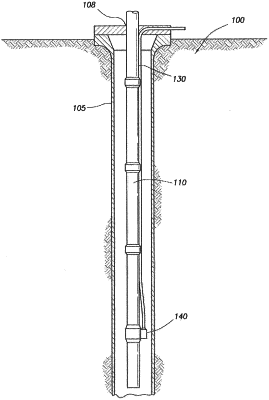| CPC C09K 8/54 (2013.01) [C23F 11/163 (2013.01); E21B 41/02 (2013.01); C09K 2208/32 (2013.01)] | 17 Claims |

|
1. A method comprising:
contacting a metal surface with a fluid comprising a corrosion inhibitor additive by injecting the corrosion inhibitor additive using a capillary injection system, wherein the capillary injection system comprises a capillary injection tube connected to a side-pocket mandrel at a lower section of a production tubing;
wherein the corrosion inhibitor additive comprises an ionic liquid;
wherein the ionic liquid comprises an organic cation and an organic anion, wherein the organic anion comprises two anionic moieties, a carboxylate anionic moiety and a phosphonate anionic moiety, wherein the organic cation comprises an ammonium cationic moiety, wherein the ionic liquid has a stoichiometric ratio of anionic moieties to cationic moieties from 1:1 to 1:2;
wherein the two anionic moieties and the ammonium cationic moiety each comprises R1, R2, R3, and R4, wherein each of R1, R2, R3, and R4 comprises a hydrocarbon chain;
wherein the two anionic moieties are bonded via a linking moiety comprising a C1 to C20 hydrocarbon chain;
wherein at least one of R1, R2, R3, R4, and the linking moiety comprises a heteroatom; and
wherein the corrosion inhibitor additive at least partially inhibits corrosion of the metal surface.
|